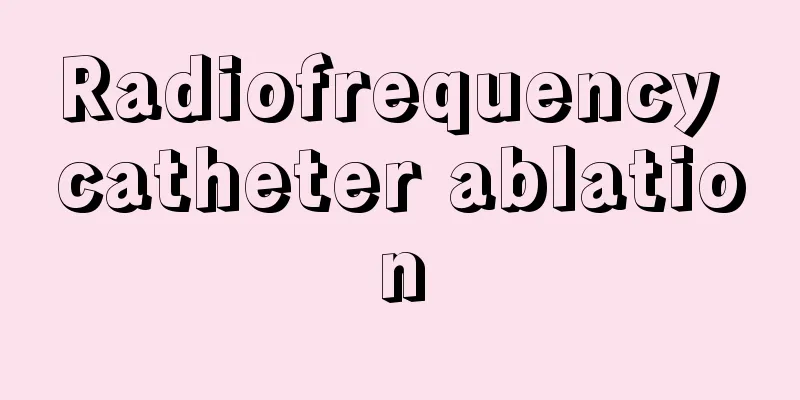Radiofrequency catheter ablation

|
Radiofrequency catheter ablation is a relatively common treatment for heart disease in clinical practice, but many people do not have enough understanding of this technology. Catheter radiofrequency ablation can mainly treat arrhythmia or other heart diseases. This treatment technology has the advantages of small wounds, fast recovery and few side effects. Let’s learn more about the principles of catheter radiofrequency ablation.
Since the local damage caused by radio frequency current to the myocardium is very limited, about 3-4 mm in diameter and depth, it will not affect the surrounding normal myocardial tissue, so patients generally do not feel obvious discomfort during the operation. Most operations are completed in about an hour, and the patient can usually be discharged from the hospital in two to three days. Generally speaking, the following arrhythmias can be treated with radiofrequency catheter ablation: 1. Paroxysmal supraventricular tachycardia is characterized by sudden onset of palpitations and sudden cessation of heart palpitations, each lasting from a few minutes to a few hours. The electrocardiogram during the attack can provide a clear diagnosis. 2. Most cases of preexcitation syndrome can be diagnosed by ordinary electrocardiogram. If accompanied by palpitations or atrial fibrillation, radiofrequency ablation should be performed; 3. Atrial flutter and atrial tachycardia are the main manifestations, and the electrocardiogram during the attack can clearly diagnose; 4. Idiopathic ventricular tachycardia without other organic heart disease, palpitations are often accompanied by dizziness, sometimes syncope; 5. Atrial fibrillation includes paroxysmal and persistent types, which cause repeated palpitations and are prone to produce blood clots, significantly increasing the incidence of stroke. Currently, the success rate of radiofrequency ablation for atrial fibrillation is not as high as that for other types of tachycardia, but it is still an important treatment for atrial fibrillation; 6. Patients with obvious symptoms of frequent ventricular premature beats that are not well controlled by drugs. 2. Advantages of Radiofrequency Ablation RA-catheter radiofrequency ablation, which is radiofrequency ablation treatment via radial artery puncture, is a treatment method for arrhythmias currently used in Chinese cardiac interventional treatment centers. This method combines multiple medical methods such as radiofrequency ablation, DSA interventional technology, and vascular imaging technology, and has excellent therapeutic effects on arrhythmias caused by various types of physiological electrical abnormalities. Compared with interventional catheter radiofrequency ablation via femoral artery puncture, RA-catheter radiofrequency ablation via radial artery puncture reduces the patient's pain to a certain extent. There is no need for bed rest or sandbag pressure after surgery, which greatly reduces the chance of infection and thrombosis, and has obvious advantages. 1. No damage to the heart: Radiofrequency current causes very limited damage to the myocardium, about 3-4 mm in diameter and depth, and will not affect heart function; 2. Minimally invasive: No need to make an incision through the chest or back, only need to puncture through the radial artery, which does not affect the appearance, and the wound is only 2mm; 3. No side effects: The operation is performed under local anesthesia. The patient is awake throughout the operation and can tell the doctor about his or her feelings at any time, thus avoiding the side effects of general anesthesia and surgical risks. 4. Quick recovery: The operation time is short and can be completed within one hour. The patient can walk on the second day after the operation and can be discharged from the hospital in two to three days. 5. Less pain: RA-catheter radiofrequency ablation is performed by puncturing the radial artery, which is easy to care for after surgery, will not cause infection, will not form blood clots, does not require the pain of immobilization and bed rest, and can take care of urination and defecation completely by oneself; 6. Real-time efficacy evaluation: Intracardiac electrophysiological examination can confirm whether the operation is successful. |
<<: How does the IUD prevent pregnancy
>>: Can hotel towels spread diseases?
Recommend
Can I use laser to remove freckles during my period?
When women have their periods, their bodies are r...
What should I do if a cigarette butt burns and causes blisters?
Cigarette butt burns and blisters are a common pr...
Are there any abnormalities in the routine blood test for melanoma?
Are there any abnormalities in the routine blood ...
What is the survival rate of advanced intestinal cancer?
The late stage of intestinal tumor is the most se...
What is the reason for pain under the left ribs?
The common causes of pain under the left ribs are...
The dangers of brain cancer that cannot be ignored
As our lives continue to expand, we are getting b...
Smoking is the direct cause of lung cancer!
Smoking is the direct cause of lung cancer! We al...
There are bubbles in the honey
Most people are afraid of buying fake honey becau...
What are the early symptoms of malignant bone cancer?
What are the early symptoms of malignant bone can...
How to make a mid-term diagnosis of lymphoma
In the middle stage of malignant lymphoma, there ...
There are several treatments for liver cancer. 4 effective methods for treating liver cancer
Liver cancer is a more serious malignant tumor di...
What is the main treatment for lung cancer? The various methods for lung cancer have their own advantages. Analysis
Air pollution in cities has led to worsening air ...
Is it true that dead old turtles cannot be eaten?
Soft-shelled turtle is a high-protein food, and i...
Several effective ways to prevent colon cancer
Colon cancer is a tumor disease that can cause se...
What are the dangers of sitting for long periods of time? These consequences must be prevented!
The phenomenon of long-term sitting is quite comm...









